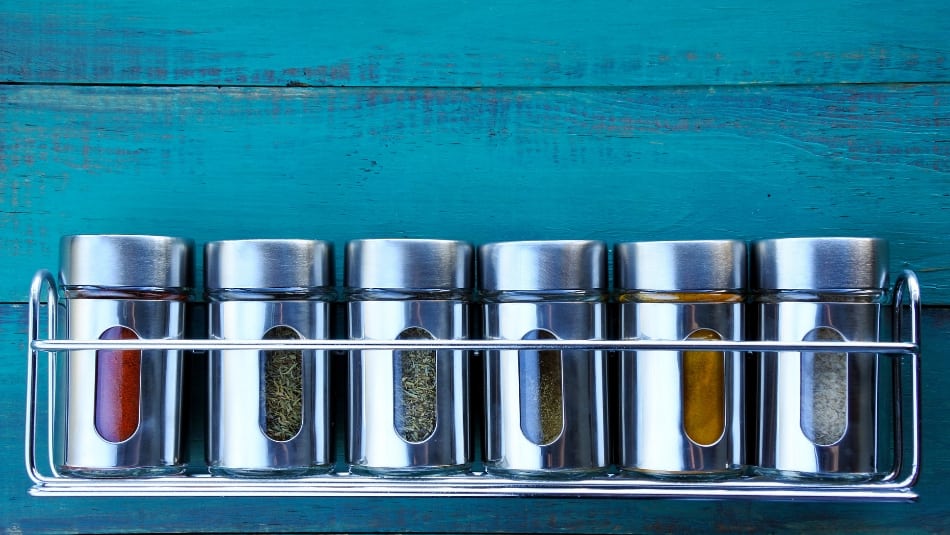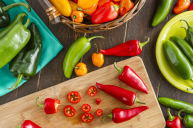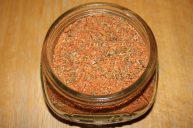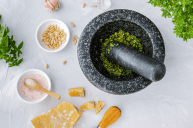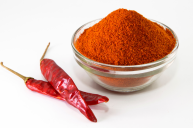I've been known to bring my own spices with me when traveling (putting spices in one of those plastic days of the week pill holders is a brilliant travel hack, FYI), so I definitely have opinions about the basic seasonings all cooks need in their kitchen. Maybe you're just starting out in your own kitchen or you've recently moved or did a deep clean and are starting from scratch. Good spices and herbs can be expensive, so you may to start with a few and build your way up.
Your spice cabinet should contain herbs (the leaves of the plant), spices (any other part of the plant including bark, flower, root, or seed), and, of course, salt.
A few pieces of shopping advice for your basic spices:
- Always get whole where you can. Like coffee beans, spices stay freshest when whole (and they're easy to grind with an extra coffee grinder or mortar and pestle).
- Get the smallest amount you need. While spices and herbs will keep for some time, especially if they're whole, they do lose potency.
- Make your own spice blends are easy, but having a couple of pre-made blends can be great time savers (as long as they're quality blends).
Walk into any spice shop and the variety can be overwhelming. It can be fun to experiment with different seasonings, but really, if you're looking to get the most bang for your buck (or just have a super tiny kitchen) you only need a small set of basic spices and herbs to cook almost anything. Start with this list and then add to it as money and desire allow.
Basic Spices
View this post on Instagram
There are a thousand and one spices you could buy and all of them are wonderful. Depending on how you cook, your basic spices list may be a little different. For example, if you fix Mexican food five times a week, you want a chili powder always at hand, but if you adore Indian food, turmeric is a must-have for your spice rack. The list below is the most basic starting point for your kitchen; with these spices, you can make any dish tasty.
Ground Cinnamon: Used for sweet and savory dishes alike, a bit of cinnamon makes almost anything better. There are different types of cinnamon; which one you prefer depends on if you like strong and sharp or mild and sweet.
Cayenne Pepper: With a moderate heat, cayenne goes a long way in any dish that needs a bit of heat. It also works wonders for stuffed sinuses (try mixing it in a tea with some honey and drinking slowly).
Ginger: Another spice that works for savory just as well as sweet, powdered or ground ginger adds a lovely sweet heat to almost any dish.
Garlic Powder: You may keep garlic powder around for when you run out of fresh garlic, but the powder form is also good for certain uses, particularly garlic bread, popcorn, croutons, and in dry rubs.
Cumin: Used by a wide variety of cuisines, ground cumin goes in almost any kind of savory dish. There is a such a thing as too much cumin, but you'll use it more than you think.
Pepper: This one almost goes without saying, but freshly ground pepper (black peppercorns are a solid basic) is a must in almost any dish. If you only get one spice, pepper should be it.
Crushed Red Pepper (or Flakes): Use on pizza and in stir-fries and pasta for a bit of heat. Or a lot; you can control the heat level with the amount of spice you use.
Smoked Paprika: Most lists with basic spices are going to call for paprika. Smoked paprika is a different beast. The chilies used to make paprika are smoked while drying and then crushed to make this spice. This spice is a must have if you're looking to add a smokey taste to any dish, for example, if you want a smokey meat without grilling or if you're a vegetarian.
One spice blend: Keeping a spice mix on hand can make meal prep faster, especially if it's for a type of dish you cook often. You could make this spice blend a curry powder, garam masala, Italian blend, or an Asian five-spice. What matters most is that it's something you like and use several times a week for multiple dishes.
Basic Herbs
View this post on Instagram
There are fewer herbs on this list, partly because the variety of herbs is smaller, but also because you should use fresh herbs where you can. These four are good to keep on hand in your spice cabinet because they work for so many different dishes and they work well in dried form.
Basil: For Italian dishes especially, dried basil is a must-have. Sprinkling a little on pasta or pizza gives your dish a wonderful flavor.
Oregano: Also thought of as Italian, dried oregano is used in Mediterranean, South American, and Cajun cooking as well.
Rosemary: Add a woodsy taste to any dish with rosemary and then drop a sprig in a cocktail for a fancy drink.
Sage: We think of sage as a Thanksgiving herb, but it's good any time of year. Though try it with a butternut squash or pumpkin ravioli and that might be the only thing you eat all autumn long.
